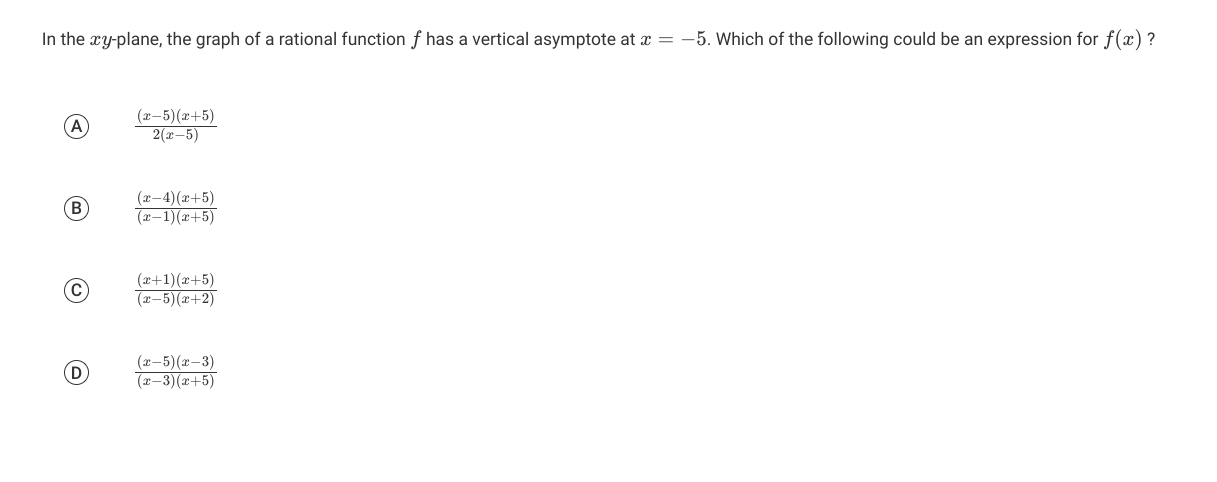AI tutor
Welcome to Bytelearn!
Let’s check out your problem:

In the -plane, the graph of a rational function has a vertical asymptote at . Which of the following could be an expression for ?(A) (B) (C) (D)
Full solution
Q. In the -plane, the graph of a rational function has a vertical asymptote at . Which of the following could be an expression for ?(A) (B) (C) (D)
- Identify Vertical Asymptote: Identify the characteristic of a vertical asymptote in a rational function. A vertical asymptote occurs where the denominator of a rational function is zero, but the numerator is not zero at the same -value.
- Examine Option (A): Examine option (A) to see if it has a vertical asymptote at .The denominator of option (A) is , which is zero when , not . Therefore, it cannot have a vertical asymptote at .
- Examine Option (B): Examine option (B) to see if it has a vertical asymptote at . The denominator of option (B) is , which is zero when . However, the numerator also has a factor of , which would cancel out the in the denominator, eliminating the vertical asymptote at .
- Examine Option (C): Examine option (C) to see if it has a vertical asymptote at . The denominator of option (C) is , which is zero when , creating a vertical asymptote at . Since we are looking for a vertical asymptote at , this option is not correct.
- Examine Option (D): Examine option (D) to see if it has a vertical asymptote at . The denominator of option (D) is , which is zero when . The numerator is , which does not cancel out the in the denominator. Therefore, this function has a vertical asymptote at .
More problems from Write a quadratic function from its x-intercepts and another point
QuestionGet tutor help
QuestionGet tutor help
QuestionGet tutor help
QuestionGet tutor help
QuestionGet tutor help
QuestionGet tutor help
QuestionGet tutor help
QuestionGet tutor help
